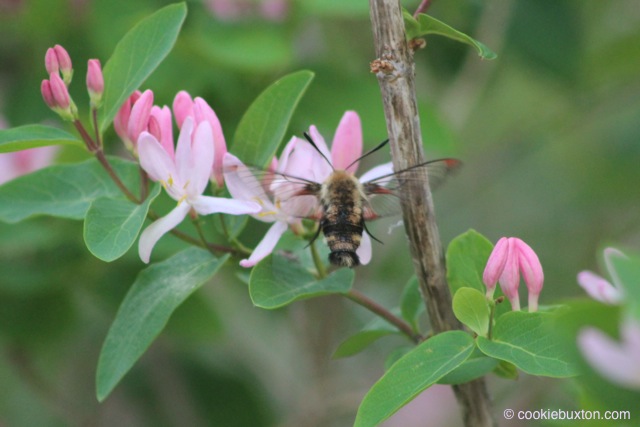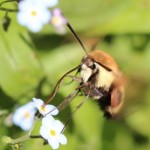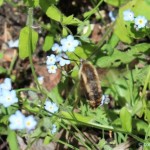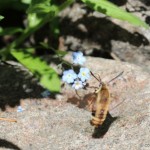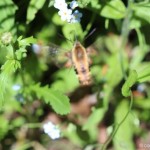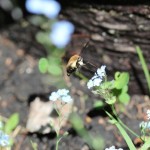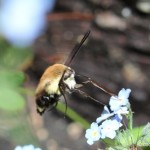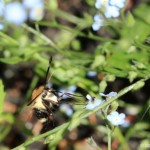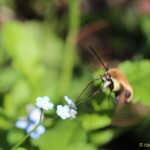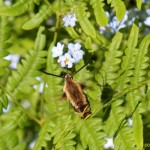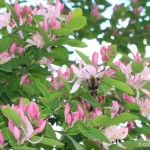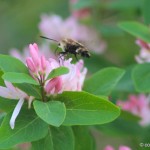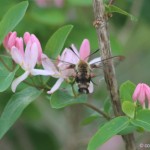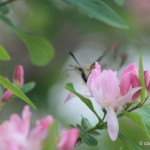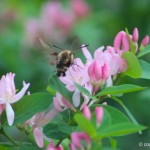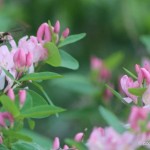The Beautiful Bumblebee Moth
Bumblebee Moth or Snowberry Clearwing (Hemaris diffinis).
It’s a hummingbird, it’s a bee… well, actually it’s neither. It just likes other creatures to think it is something other than a moth, so it has, in a remarkable fashion, evolved to have the attributes of flying like a hummingbird and looking like a bee. This perfect little creature is the Bumblebee Moth (Hemaris diffinis), a member of the Hawk moth family. It is also known by the name Snowberry Clearwing, for the fact that its larvae feed on snowberry plants and, unlike other moths, its wings are translucent, like those of a bee. Also, unlike most moths, it forages for food during the daytime.
The Bumblebee Moth is a superb flyer. With its wide wing span of up to five centimetres (two inches), it can hover like a hummingbird; it flies with its long tongue curled in front of its head; and it dines on the nectar of flowers while in flight, without landing. In appearance, people would think it is a really unusual bumblebee, but longer, and with a fancy bit of a flair at its rump. Through its evolutionary survival route, it somehow adapted, in mimicry, the appearance of the bee – with its black and yellow colouring and an elongated, hairy body – to take advantage of the success and “reputation” of bees and wasps in warding off predators. Yet, it lacks the sting of the bee, and is instead a unique and handsome-looking moth.
I first saw this beautiful insect a year ago at Lake Brereton in eastern Manitoba, which is situated within the Canadian Shield region. A year later, visiting the same cottage country, I again had the pleasure of seeing a Bumblebee Moth, and I was able to capture some photographs while it was dining on the nectar of forget-me-nots populating a small, dappled-sunlight garden near the lake. The Bumblee Moth is a quick flyer, and it moved quickly from flower to flower, ignoring my presence, but not staying in one place for more than the time it took to stretch out its rather elegant, long tonque to gather nourishment.
It took some digging on the web to find out more about this moth. It wasn’t listed in the book I keep on northern insects. I would suggest using the Latin species name Hemaris diffinis as the best route to information.
As larvae, the Bumblebee Moth feeds on honeysuckle and snowberry plants. There was, in fact, a large honeysuckle bush in bloom within 50 metres of the cottage garden where I saw the moth. Obviously, having breeding territory nearby supported survival of the species in this particular area and brought it back year to year.
I’m delighted to share a few photos with you, and I wish you well in spotting this Hawk moth species in your own photo journeys into its North American range.
As a starting point for any research of your own, let me send you to a good resource, titled Butterflies and Moths of North America.
Photos and Text: NK
Photo location: Lake Brereton, MB Canada
Copyright: NK/cookiebuxton.com
Photo Gallery
Friends, note that I added six new images in November 2014. I took other photographs of the Bumblebee Moth at Lake Brereton, Manitoba in 2013. This set shows the moth enjoying the nectar of a beautiful honeysuckle bush growing wild in Whiteshell Park lake country.
Click on any photo to enlarge, and click on the photo to advance to the next image.
